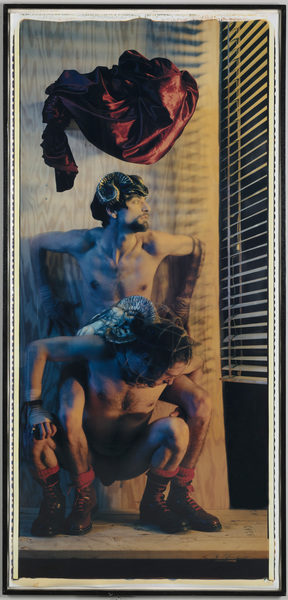The Musée national des Beaux-Arts in Québec City will be presenting this fall the long-awaited retrospective of the seminal Canadian artist Evergon, born Albert Jay Lunt in 1946 in Niagara Falls, Ontario. This major exhibition will span his entire career, from 1971 to the present, with a view to shedding contemporary light on the artist’s long-term output. More than 200 works will be assembled for the first time to highlight this colourful individual and his multifaceted work.
Evergon is regarded as a genuine cultural icon in Canada. He is an artistic and social pioneer who focuses on contemporary questions concerning cultural and body diversity and diversity of identity. For nearly 50 years, the artist’s career has centred on bold photographic, technological, and aesthetic research. His always moving and occasionally irreverent striking imagery is often an extension of classical painting. The simultaneously political and sensualistic nature of his work raises questions on sexual orientation. He revisits with rare vitality genres such as portraits, landscapes, or nudes. Through collages, the art of photocopy and an entire array of exploratory photographic approaches, including the Polaroid, Evergon deepens the terms of queer masculine and feminine identity, thereby shaking up fixed ideas.
Numerous striking works underpin Evergon’s career, in particular the immense colour Polaroids from the 1980s, for which he is internationally recognized. Critics and several artistic institutions in the world have also paid tribute to his award-winning work in holography. His series devoted to his mother Margaret renews the representation of the ageing body as few artists have done and has received widespread recognition. Evergon is an immense creative force: identity, body diversity, love, desire, and ageing are at the root of his work. Like death and life, it is the latter in all its facets that the artist celebrates. Evergon grafts on to life notions of autobiographical fiction and extimity, a revelation of the intimate in the public sphere that is common today but that he explored early in his career. The artist deems all his works to be love letters.
Evergon’s concerns encompass social and artistic issues that go beyond the body’s socially constructed limitations. He thus abandons clichés by representing atypical bodies and goes beyond the canons of standardized beauty while relying on the seductive powers of photography, capable of inventing fictional worlds or theatres as is true of another major series in his career, in which he imagines the life of an entire community, that of the characters the Ramboys. Evergon continues to be in perfect synchronicity with the emancipatory challenges of photography: he has forcefully called into question the notion of the author by creating various alter egos. He disrupts the foundations of the photographic image through an astonishing baroque aesthetic and brushes aside the conventional canons of beauty by representing atypical bodies that he invests with panache.
Articles taggés “Evergon Retrospective Musée National Des Beaux Arts Québec City”
Flux RSS
SouscrireCatégories
- Test (0)
- Hotel et hébergement (119)
- Sports d'hiver (9)
- Biographie (52)
- Théâtre (23)
- Destination (69)
- Choses à faire (167)
- Manger et boire (134)

